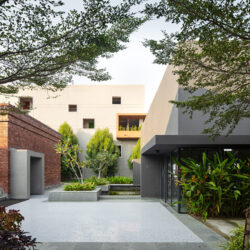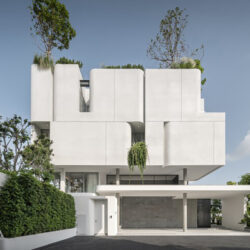Creating captivating focal points is essential for achieving excellence in architectural and interior design. A well-crafted focal point not only commands attention but also enriches the narrative of a space, establishing visual harmony and purpose. Let’s explore expert tips on how to craft striking centerpieces in each room.
The Power of Art and Accessories
Artwork and accessories play a crucial role in defining a room’s character and evoking emotion. According to Ar Sharmin Wade from Studio SB, eye-catching art pieces and thought-provoking sculptures become powerful focal points, infusing personality into the space. Deliberate placement considering sightlines and traffic flows ensures their effectiveness. Statement accessories like unique lighting fixtures and intricate mirrors add depth and visual interest, completing the design with finesse.
Colour and Texture Dynamics
Colour and texture are pivotal in shaping focal points and setting the mood of a room. Ar Anurag Pashine highlights the strategic use of colour, whether through bold contrasts or harmonious palettes, to guide the eye towards the intended focal point. Ar Pallavi Pashine emphasizes the sensory experience created by texture, enriching both tactile and visual aspects. Incorporating a variety of textures enhances the impact of the focal point, creating a multi-dimensional and engaging environment.
Strategic Furniture Placement
Thoughtful furniture arrangements direct focus towards chosen areas, transforming them into compelling focal points. Rohit Bhoite suggests positioning furniture around central elements such as attractive artwork or statement furniture pieces to create gathering points that encourage interaction. This arrangement ensures accessibility and functionality while enhancing the room’s aesthetic appeal. Multi-functional furniture, like sculptural coffee tables or intricately designed bookshelves, serves both practical and aesthetic purposes, becoming the focal point of the room.
By leveraging these techniques, architects and designers can transform interior spaces into extraordinary experiences, leaving a lasting impression on occupants. A well-crafted focal point not only captivates the eye but also enriches the narrative of the space, telling a compelling story of design and creativity.



















